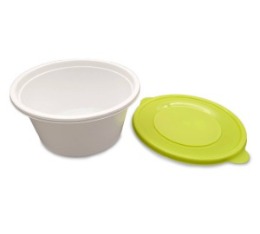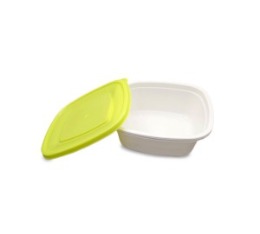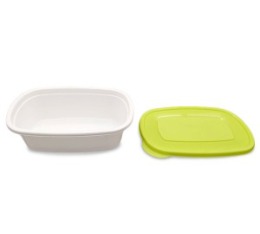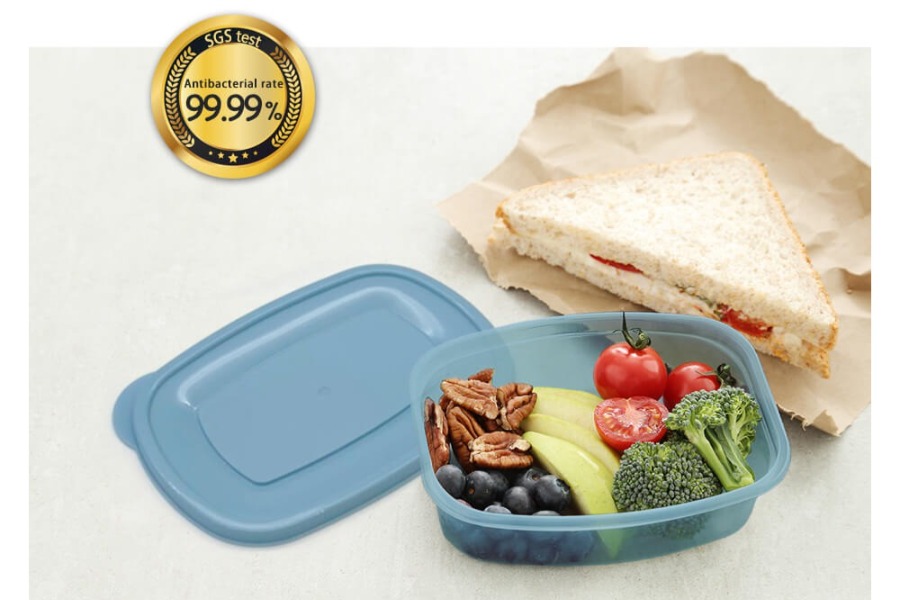Plastic is a great invention that brings many conveniences to our lives. However, when it comes to plastics in contact with food, it raises food safety concerns. We need to be cautious and ensure food safety without panicking!
It is well-known that certain types of plastic materials can release plasticizers when exposed to heat. But did you know that they can also release plasticizers when stored in the freezer? It's not only heat that raises concerns about plasticizers; acidity or fatty substances can also facilitate their leaching! Therefore, if meat or fish is stored in plastic bags and placed in the freezer, there is still a possibility of the food being contaminated with plasticizers due to prolonged contact with the plastic bag's surface, which may come into contact with fatty substances.
There are various types of plastic containers available on the market that are suitable for refrigeration, freezing, and microwave heating! Now, let's share how to choose plastic containers that can be easily stored in the refrigerator, freezer, and safely used in the microwave. They are both safe and practical!
Plastic containers typically have labels on the bottom indicating the materials used, such as PET, HDPE, PVC, PE, PP, PS, PC. However, many people are still unclear or cannot remember which plastic materials correspond to these labels. They may also be unsure about which plastic materials are suitable for hot food, refrigeration and freezing, or microwave heating.
In order to facilitate easy identification of plastic materials, the American Plastics Industry Association developed the Resin Identification Code (RIC) in 1988. This coding system uses a symbol of a triangle on each plastic container or packaging, with a number from 1 to 7 inside the symbol. Each number represents a specific plastic material.
Plastic - Characteristics
Common Plastic Food Container Materials and Their Characteristics| Common Material Labels and Abbreviations |
Name
|
Heat Resistance | Material Characteristics | Types of Products |
|---|---|---|---|---|
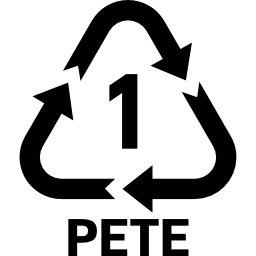 |
Polyethylene terephthalate | 60-180℃ | Acid and alkali resistance, oil resistance, high toughness, high transparency. However, general non-crystalline PET has limited heat resistance and is only suitable for non-high-temperature applications such as cold drinks and condiments. Heat-resistant PET produced through modification or crystallization processes, on the other hand, exhibits opaque and high-temperature resistant characteristics, making it suitable for packaging hot food. When using, please pay attention to the heat resistance temperature indicated on the product label. | Bowls, cups, bottles, cutlery, straws, stirrers, water bottles, condiment bottles, ziplock bags. |
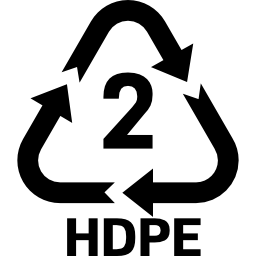 |
High-density polyethylene | 90-110℃ | Excellent water resistance, acid and alkali resistance, and oil resistance, with higher rigidity. The appearance of the products is typically semi-transparent or opaque. Due to its excellent water and gas barrier properties, it is commonly used in food packaging. | Straws, stirrers, water bottles, bottles, paper food containers, condiment bottles, plastic bags, cling film. |
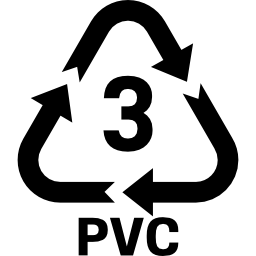 |
Polyvinyl chloride | 60-80℃ | Acid and alkali resistance, flame retardancy, and can be classified into flexible or rigid PVC. It is also easily printable. However, it has poor heat resistance and is not suitable for packaging hot food. Its largest application in the food industry is as packaging film material. | Chopsticks, plastic bags, cling film. |
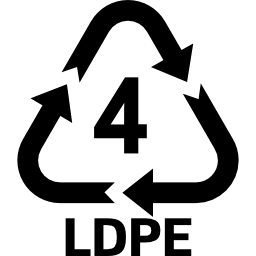 |
Low-density polyethylene | 70-90℃ | Acid and alkali resistance, alcohol resistance, water resistance, oil resistance, flexibility, and relatively poor heat resistance. The appearance of the products is typically semi-transparent or opaque. Due to its excellent water and gas barrier properties and flexible nature, it is commonly used in food packaging. | Straws (for consuming beverages at room temperature), cups, stirrers, water bottles, condiment bottles, plastic bags, cling film. |
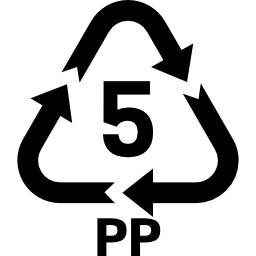 |
Polypropylene | 90-140℃ | Acid and alkali resistance, oil resistance, alcohol resistance, boilable, glossy appearance, excellent rigidity. | Knife, fork, spoon, chopsticks, bowl, plate, cup, pudding cup, paper food container, soy milk bottle, straw (most commonly used material in the market), stirrer, plastic bag. |
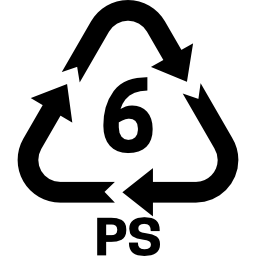 |
Polystyrene | 70-90℃ | Heat resistance, not resistant to alcohol, not resistant to oil, excellent transparency, good rigidity, easy to dye, good printability. | Knife, fork, spoon, chopsticks, instant noodle bowl, plate, jar, Yakult bottle, ice cream container, stirring stick. |
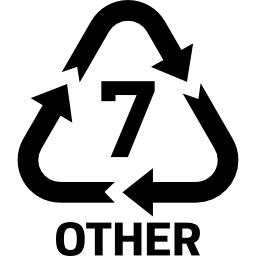 |
Melamine resin | 110-130℃ | Acid-resistant, alkali-resistant, oil-resistant, alcohol-resistant, glossy, good rigidity, boiling water-resistant. | Knife, fork, spoon, chopsticks, bowl, plate, cup. |
 |
Polycarbonate | 120-130℃ | Acid-resistant, oil-resistant, not alkali-resistant, excellent transparency, can withstand boiling. | Knife, fork, spoon, chopsticks, bowl, plate, cup, stirring stick, cup, kettle, and bottle. |
 |
PolylacticAcid/ Polylactide |
50-120℃ | Resistant to acids and alkalis, high transparency, not heat-resistant, lightweight. It is commonly used in the production of packaging bags, agricultural films, textile fibers, cold beverage cups, and general containers for storing food at room temperature. However, heat-resistant PLA produced through modification or crystallization processes may have opaque and high-temperature resistance properties. Please refer to the product labeling for the recommended heat resistance temperature. | Knife, fork, spoon, chopsticks, bowl, plate, stirring stick, cup, plastic bag, cling wrap, water bottle, and bottle. |
 |
Acrylonitrile Butadiene Styrene | 90-100℃ | Acid and alkali resistant, opaque, with a glossy surface. | Knife, fork, spoon, chopsticks, bowl, plate. |
 |
Acrylic | 80-90℃ | Resistant to acid and alkali, high transparency, lower density than glass, excellent mechanical properties and transparency compared to glass. It is commonly used as a substitute for glass in various products. In daily life, it is often used for transparent tubes, transparent cover plates, and general transparent tableware such as bowls and plates. | Knife, fork, spoon, chopsticks, bowl, plate, stirring stick, straw. |
 |
acrylonitrile-styrene copolymer | 80-100℃ | Acid and alkali resistance, oil resistance, not resistant to alcohol, good rigidity, excellent transparency, good water and gas barrier properties. | Knife, fork, spoon, chopsticks, bowl, plate, cup, straw, stir stick, water bottle, seasoning bottle. |
 |
Tritan Copolyester | 180-280℃ | Clear and transparent like glass, excellent impact resistance, strong scratch resistance, excellent moldability, good secondary processing properties, high temperature resistance, high chemical resistance, safe and environmentally friendly, free from bisphenol A, compliant with international certifications such as the US FDA, harmless to human health. It is the most popular non-toxic and safe material for tableware and designated material for infant and baby products in Europe and America. | Water bottle, baby products, bowl, plate, cup, food container. |
Among all plastic products, only the category 5 PP material and Tritan can be used for microwave heating. However, it is important to note that they must be labeled as 'microwave-safe' and pass the necessary tests. Other plastic materials are not recommended for microwave use.
Recommended safe food packaging materials.
PP
PP (Polypropylene) is a safer material used in food containers!
It has less concern about plasticizers and is known for its high temperature and low-temperature resistance. Therefore, PP is the most commonly used material for food containers in the market.
PE ( HDPE / LDPE )
PE (Polyethylene) is considered relatively safe for food containers due to its incompatibility with plasticizers. PE has good low-temperature resistance and is less prone to breakage at low temperatures. PE is further classified into HDPE and LDPE. HDPE not only withstands temperatures below -50°C but also has higher toughness compared to LDPE. Therefore, when purchasing frozen meat, it is recommended to choose products packaged in HDPE.
TRITAN™
TRITAN™ provides the utmost assurance of safety and non-toxicity. It surpasses glass as well as stainless steel and many other plastics. It is dishwasher-safe without warping or cracking, and Tritan™ is highly resistant to dents caused by impact. Its temperature resistance ranges from approximately boiling point at 100°C to as low as -20°C. Whether used in high-temperature or low-temperature conditions, it does not release harmful substances that can jeopardize human health.



